During the past week, Grace Kennedy was the top 10 best performer rising 16 percent to 67 percent, followed by Caribbean Producers 12 percent gain to close the week at $2.63, during a period when stocks continue their climb higher to their highest level since early-April on the Jamaican Stock Exchange Main Market in the past week.
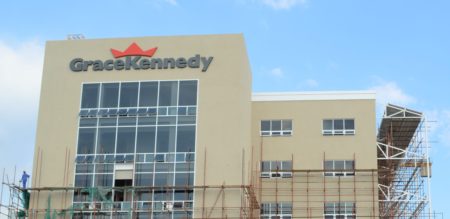
Grace Kennedy gained 16% for the week.
The Junior Market continues to fight in continuing to build on the gains in recent weeks, with moves in both markets confirming the bullish signal technical indicators been flashing.
The movement in the markets resulted in Stanley Motta coming into the Main Market IC TOP 10, replacing Jamaica Producers. The Junior Market Top 10 remained without any new movement in and out, but Jamaican Teas started trading ex split on Friday and closed at $2.05, down from last weeks’ adjusted closing price of $2.23.
This week’s focus: 2020 is now drawing to a close and should lead investors to start the focus on 2021 and some companies that could deliver superior returns. Many of the companies that suffered badly from reduced sales could be some that should be on the investors’ list. 
 Access Financial, Caribbean Producers, Express Catering, Elite Diagnostic, Lasco Financial, NCB Financial are some that could enjoy above-average recovery and then there are entities such as Grace Kennedy, Carib Cement, Berger Paints and Lumber Depot that should get added push from continued buoyancy in the construction sector.
Access Financial, Caribbean Producers, Express Catering, Elite Diagnostic, Lasco Financial, NCB Financial are some that could enjoy above-average recovery and then there are entities such as Grace Kennedy, Carib Cement, Berger Paints and Lumber Depot that should get added push from continued buoyancy in the construction sector.
The top three stocks in the Junior Market with the potential to gain between 231 to 394 percent by March 2021 are Caribbean Producers, followed by Elite Diagnostic and Limber Depot. With expected gains of 149 to 260 percent, the top three Main Market stocks are, Berger Paints followed by Radio Jamaica and Carreras in the third position.
 The local stock market’s targeted average PE ratio is 20based on profits of companies reporting full year’s results, from now to the second quarter in 2021. The Junior and Main markets are currently trading well below the market average, indicating the potential gains ahead. The JSE Main Market ended the week, with an overall PE of 15.5, The Junior Market 13.3, based on ICInsider.com’s projected 2020-21 earnings. The PE ratio for the Junior Market Top 10 stocks average a mere 7.2 at just 54 percent to the average of the Junior Market. The Main Market TOP 10 stocks trade at a PE of 9 or 58 percent of the PE of that market.
The local stock market’s targeted average PE ratio is 20based on profits of companies reporting full year’s results, from now to the second quarter in 2021. The Junior and Main markets are currently trading well below the market average, indicating the potential gains ahead. The JSE Main Market ended the week, with an overall PE of 15.5, The Junior Market 13.3, based on ICInsider.com’s projected 2020-21 earnings. The PE ratio for the Junior Market Top 10 stocks average a mere 7.2 at just 54 percent to the average of the Junior Market. The Main Market TOP 10 stocks trade at a PE of 9 or 58 percent of the PE of that market.
The average projected gain for the Junior Market IC TOP 10 stocks is 201 percent and 132 percent down from140 percent last week for the JSE Main Market,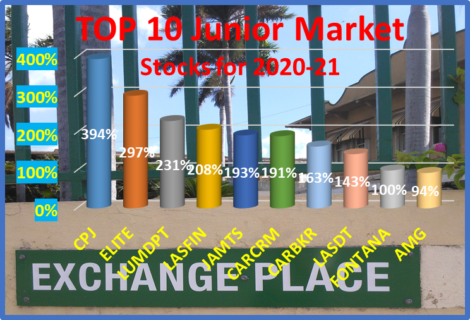 based on 2020-21 earnings, indicating greater likely gains for Junior Market stocks than the Main Market.
based on 2020-21 earnings, indicating greater likely gains for Junior Market stocks than the Main Market.
IC TOP 10 stocks are likely to deliver the best returns up to March 2021 and ranked in order of potential gains, based on likely gain for each company, taking into account the earnings and PE ratios for the current fiscal year. Expected values will change as stock prices fluctuate and result in movements in and out of the lists weekly. Revisions to earnings per share are ongoing, based on receipt of new information.
Persons who compiled this report may have an interest in securities commented on in this report.
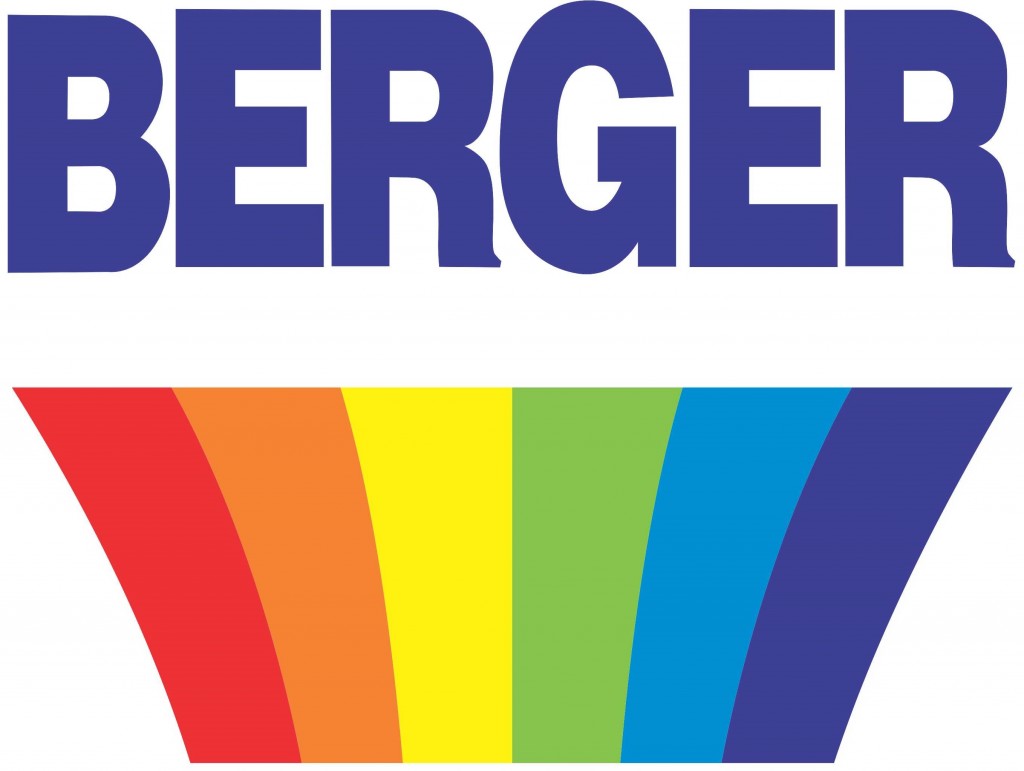
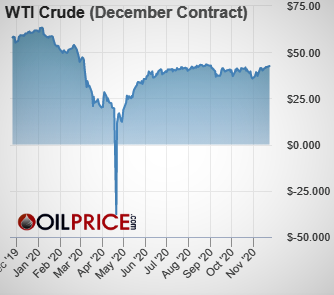 Depreciation jumped 78 percent for the quarter to $20 million and a 58 percent increase to $45 million for the year. Other operating expenses declined 8 percent for the quarter from $118 million to $108 million and saw a 25 percent rise for the year from $262 million to $327 million. Other income for the quarter stood at $7.2 million for the quarter up from just $182,000 and at $7.7 million for the year to date from $54,000 in 2019.
Depreciation jumped 78 percent for the quarter to $20 million and a 58 percent increase to $45 million for the year. Other operating expenses declined 8 percent for the quarter from $118 million to $108 million and saw a 25 percent rise for the year from $262 million to $327 million. Other income for the quarter stood at $7.2 million for the quarter up from just $182,000 and at $7.7 million for the year to date from $54,000 in 2019. Stocks rose to their highest level since mid-April on the Jamaican Stock Exchange Main Market in the past week, during the past week the Junior Market traded at the highest level in seven weeks, with moves in both markets confirming the bullish signal technical indicators been flashing for weeks.
Stocks rose to their highest level since mid-April on the Jamaican Stock Exchange Main Market in the past week, during the past week the Junior Market traded at the highest level in seven weeks, with moves in both markets confirming the bullish signal technical indicators been flashing for weeks.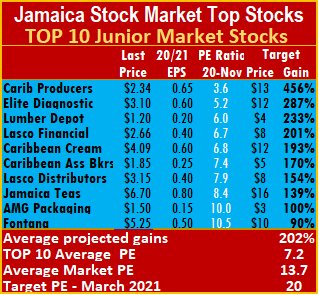
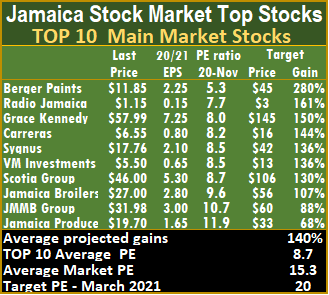 Eppley lost its Main Market TOP 10 position with the price moving up from $18.97 to $20.02 and is replaced by Jamaica Producers.
Eppley lost its Main Market TOP 10 position with the price moving up from $18.97 to $20.02 and is replaced by Jamaica Producers.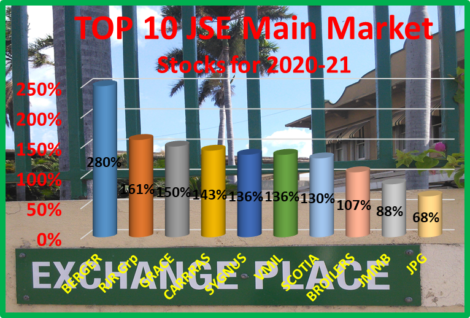 The JSE Main Market ended the week, with an overall PE of 15.3 and the Junior Market 13.7, based on ICInsider.com’s projected 2020-21 earnings. The average PE ratio of the Junior Market has been slowly rising, with better profit opportunities than the Main Market and narrowing the gap. The PE ratio for the Junior Market Top 10 stocks average a mere 7.2 at just 53 percent to the average of the Junior Market. The Main Market TOP 10 stocks trade at a PE of 8.7 or 57 percent of the PE of that market.
The JSE Main Market ended the week, with an overall PE of 15.3 and the Junior Market 13.7, based on ICInsider.com’s projected 2020-21 earnings. The average PE ratio of the Junior Market has been slowly rising, with better profit opportunities than the Main Market and narrowing the gap. The PE ratio for the Junior Market Top 10 stocks average a mere 7.2 at just 53 percent to the average of the Junior Market. The Main Market TOP 10 stocks trade at a PE of 8.7 or 57 percent of the PE of that market.
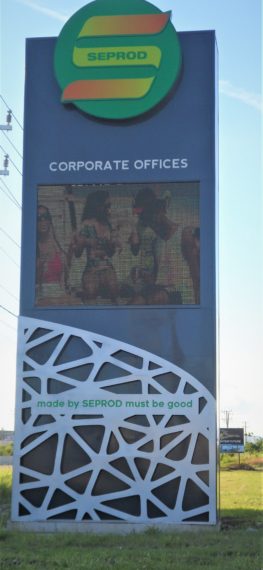 After shedding the above loss-making business, profit from continuing operations surged 351 percent to $1.3 billion for the September quarter, up from just $285 million in 2019, but the jump benefited from $780 million, generated from other operating income, with $762 million of it being gains realized on the sale of a property.
After shedding the above loss-making business, profit from continuing operations surged 351 percent to $1.3 billion for the September quarter, up from just $285 million in 2019, but the jump benefited from $780 million, generated from other operating income, with $762 million of it being gains realized on the sale of a property.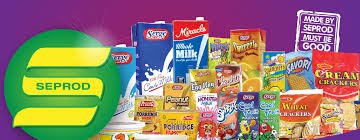
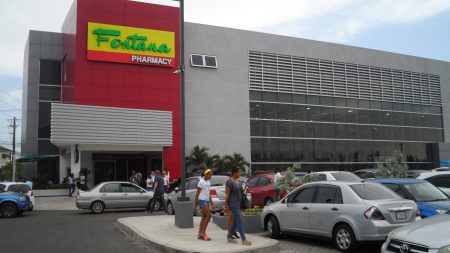
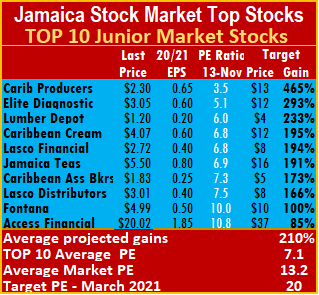
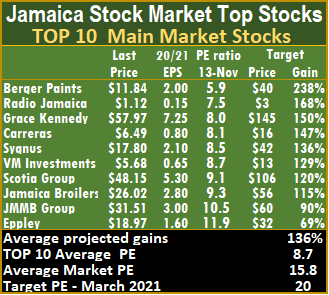 The move in the Main Market continues the move gradually higher ahead of the year-end and is in keeping with bullish signs that points to more gains ahead.
The move in the Main Market continues the move gradually higher ahead of the year-end and is in keeping with bullish signs that points to more gains ahead.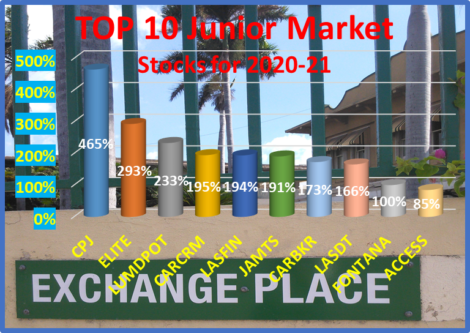 The company is on target to earn 50 cents per share for the current financial year ending June 2021.
The company is on target to earn 50 cents per share for the current financial year ending June 2021.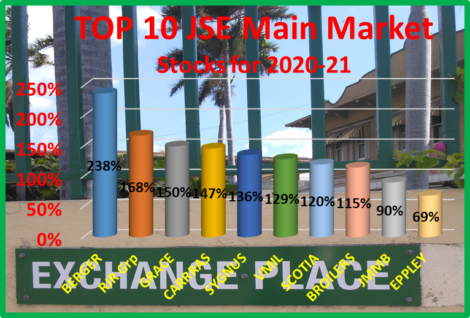 The PE ratio for the Junior Market Top 10 stocks average a mere 7.1 at just 54 percent to the Junior Market average. The Main Market TOP 10 stocks trade at a PE of 8.7 or 55 percent of the PE of that market.
The PE ratio for the Junior Market Top 10 stocks average a mere 7.1 at just 54 percent to the Junior Market average. The Main Market TOP 10 stocks trade at a PE of 8.7 or 55 percent of the PE of that market.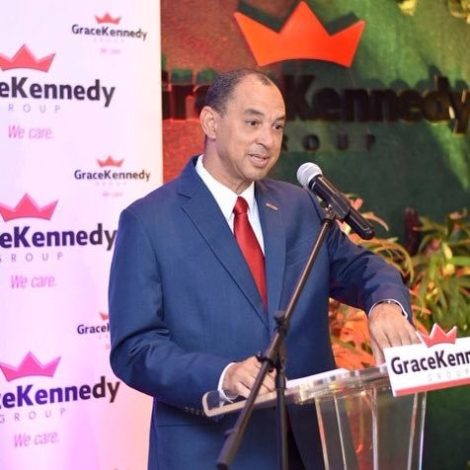
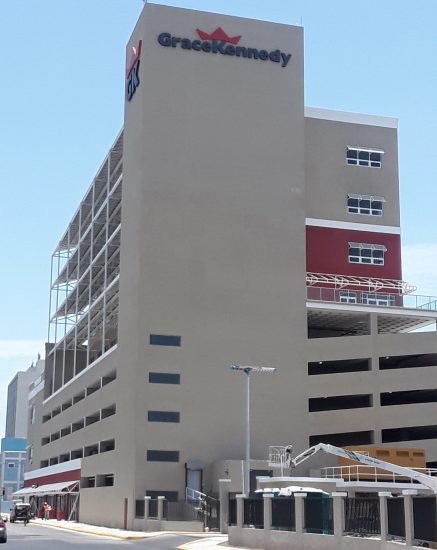

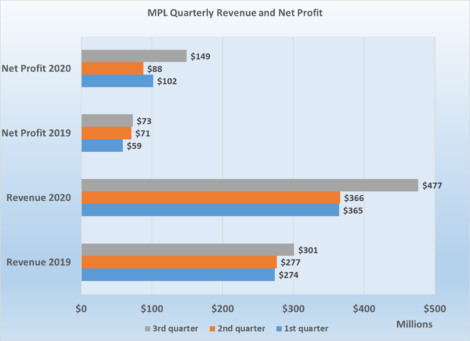 Administrative, selling and promotion expenses increased 22 percent over the second quarter and slipped two percent from the September 2019 quarterly figure of $86 million to $84 million. The Executive Chairman attributes the increase in expenses in the third quarter over the second quarter to its expanding operations, the partnership with PriceSmart presumably one such notable factor.
Administrative, selling and promotion expenses increased 22 percent over the second quarter and slipped two percent from the September 2019 quarterly figure of $86 million to $84 million. The Executive Chairman attributes the increase in expenses in the third quarter over the second quarter to its expanding operations, the partnership with PriceSmart presumably one such notable factor.

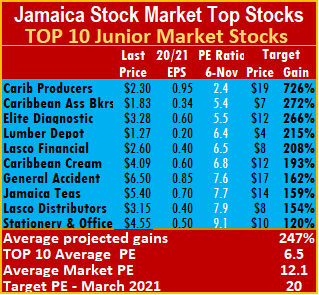
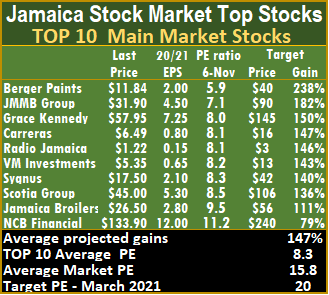 This week’s focus: Grace Kennedy continues to enjoy a phenomenal year, with profit attributed to the company’s shareholders, rising 33 percent to $1.68 billion in the September quarter, from $1.26 billion for the third quarter in the previous year and grew 35 percent for the nine months to September, to just $4.4 billion from $3.27 billion the corresponding period in 2019. Taxation more than doubled in both periods, but profit before tax grew 49 percent in the third quarter to $2.79 billion and for the nine-months, it rose 51.5 percent to $7.3 billion. Earnings per share are $1.69 for the quarter and $4.47 for the nine months and should exceed $6 for the full year.
This week’s focus: Grace Kennedy continues to enjoy a phenomenal year, with profit attributed to the company’s shareholders, rising 33 percent to $1.68 billion in the September quarter, from $1.26 billion for the third quarter in the previous year and grew 35 percent for the nine months to September, to just $4.4 billion from $3.27 billion the corresponding period in 2019. Taxation more than doubled in both periods, but profit before tax grew 49 percent in the third quarter to $2.79 billion and for the nine-months, it rose 51.5 percent to $7.3 billion. Earnings per share are $1.69 for the quarter and $4.47 for the nine months and should exceed $6 for the full year.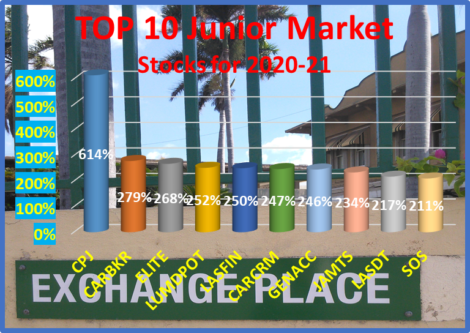 With expected gains of 150 to 238 percent, the top three Main Market stocks are now, Berger Paints followed by JMMB Group and Grace Kennedy in the third position.
With expected gains of 150 to 238 percent, the top three Main Market stocks are now, Berger Paints followed by JMMB Group and Grace Kennedy in the third position.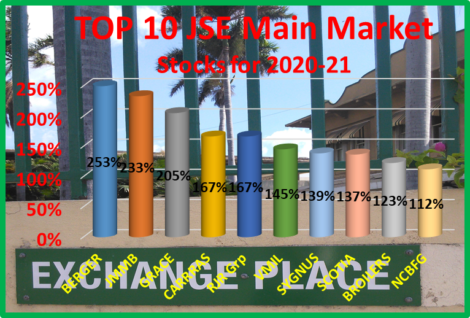 The average projected gain for the Junior Market IC TOP 10 stocks is 247 percent, and 147 percent for the JSE Main Market, based on 2020-21 earnings, indicating potentially greater gains in the Junior Market than the Main Market.
The average projected gain for the Junior Market IC TOP 10 stocks is 247 percent, and 147 percent for the JSE Main Market, based on 2020-21 earnings, indicating potentially greater gains in the Junior Market than the Main Market.


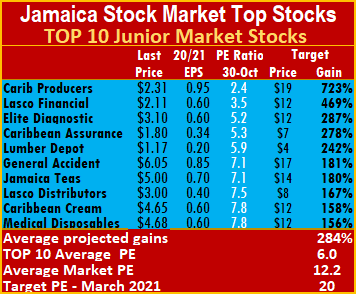
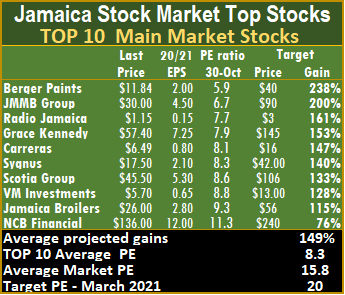 Remittances grew 11 percent and added $50 million to revenues while Cambio operations contributed 10.8 percent or $34 million to increased revenues, the company’s Managing Director Jacinth Hall-Tracey, informed shareholders in a commentary accompanying the quarterly report.
Remittances grew 11 percent and added $50 million to revenues while Cambio operations contributed 10.8 percent or $34 million to increased revenues, the company’s Managing Director Jacinth Hall-Tracey, informed shareholders in a commentary accompanying the quarterly report. With expected gains of 161 to 238 percent, the top three Main Market stocks are now Berger Paints followed by JMMB Group, Radio Jamaica replacing Grace Kennedy in the third position last week.
With expected gains of 161 to 238 percent, the top three Main Market stocks are now Berger Paints followed by JMMB Group, Radio Jamaica replacing Grace Kennedy in the third position last week.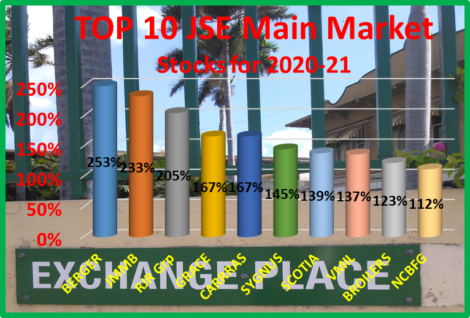 The average projected gain for the Junior Market IC TOP 10 stocks is 287 percent, and 149 percent for the JSE Main Market, based on 2020-21 earnings, indicates potentially greater gains in the Junior Market than the Main Market.
The average projected gain for the Junior Market IC TOP 10 stocks is 287 percent, and 149 percent for the JSE Main Market, based on 2020-21 earnings, indicates potentially greater gains in the Junior Market than the Main Market.





